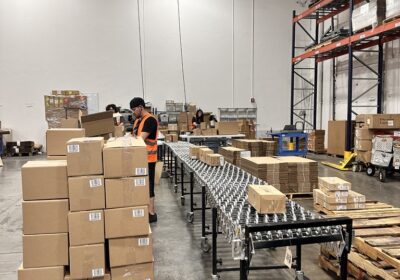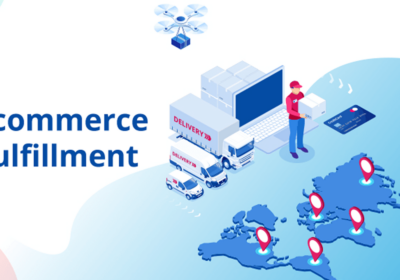
Subscription boxes have brought about a significant change to the conventional e-commerce experience, transforming routine purchases into curated moments that arrive on schedule. In the US alone, 39% of millennials are subscribed to at least one retail product, with Gen Z and Baby Boomers slightly behind. The trend of subscription-based purchases is ubiquitous across all consumer age groups.
However, behind each of these branded packages is a finely tuned logistical machine. Growing e-commerce brands must understand how subscription order fulfillment logistics work to have a strategic advantage in the industry.
With the surge in subscription commerce, fulfillment strategies have also evolved. It’s no longer just picking, packing, and shipping. Now, it’s a dynamic orchestration of inventory intelligence, order processing, delivery methods, last-mile precision, and warehouse agility.
Below, we discuss what subscription box order fulfillment logistics involves and why it could be the make-or-break factor in your brand’s ability to scale.
Key Components of the Order Fulfillment Process
Order fulfillment encompasses a range of processes, some more complex than others. We discuss them in detail below.
Receiving Processes
Receiving is the first and arguably the most critical step in subscription box fulfillment. It’s where accuracy, visibility, and speed begin. For third-party logistics (3PLs) like Relentless Fulfillment, receiving isn’t just unloading boxes. It’s about creating a systematized intake process that results in every stock-keeping unit (SKU) entering the warehouse being labeled and recorded in real-time.
Advanced receiving operations use digital scanning systems and inventory management software to log items as they arrive. These systems maintain proper product counts and flag discrepancies. Damaged goods and missing units are caught and documented at the receiving stage to prevent downstream issues during packing.
For subscription box brands, a misstep in this stage can derail the whole campaign. Suppose a client’s exclusive product for a themed box arrives late or in incorrect quantities. If receiving isn’t optimized to flag that instantly, you risk delays and customer dissatisfaction.
Receiving also goes beyond standard stock. Many subscription box companies deal with short-run, limited-edition, or customized items that demand additional inspection or handling.
Storing and Inventory Management
After receiving, the products go to the storage and inventory management phase. In subscription box order fulfillment logistics, accurate inventory management makes sure that you have the right products available at the right time without running out or overstocking.
Subscription box models often deal with multiple SKUs bundled into one shipment. Many components are also sourced from different suppliers. It differs from traditional e-commerce, which typically involves a few high-frequency SKUs.
As a result, a smart storage design is a must. A reliable fulfillment partner may use slotting optimization to store products based on turnover rate, product type, bundling requirements, and more to cut down pick time and reduce labor costs.
Inventory management software also has a central role in this aspect. Warehouse management systems (WMS) give you real-time visibility into inventory levels, turnover trends, expiration dates, and location within the facility. Such monitoring is imperative for brands that offer monthly or seasonal boxes and can’t afford misalignment in inventory.
Cycle counting and perpetual inventory auditing also help match what’s in the system with what’s on the shelves. It also helps reduce shrinkage and prevent costly surprises.
Picking and Packing
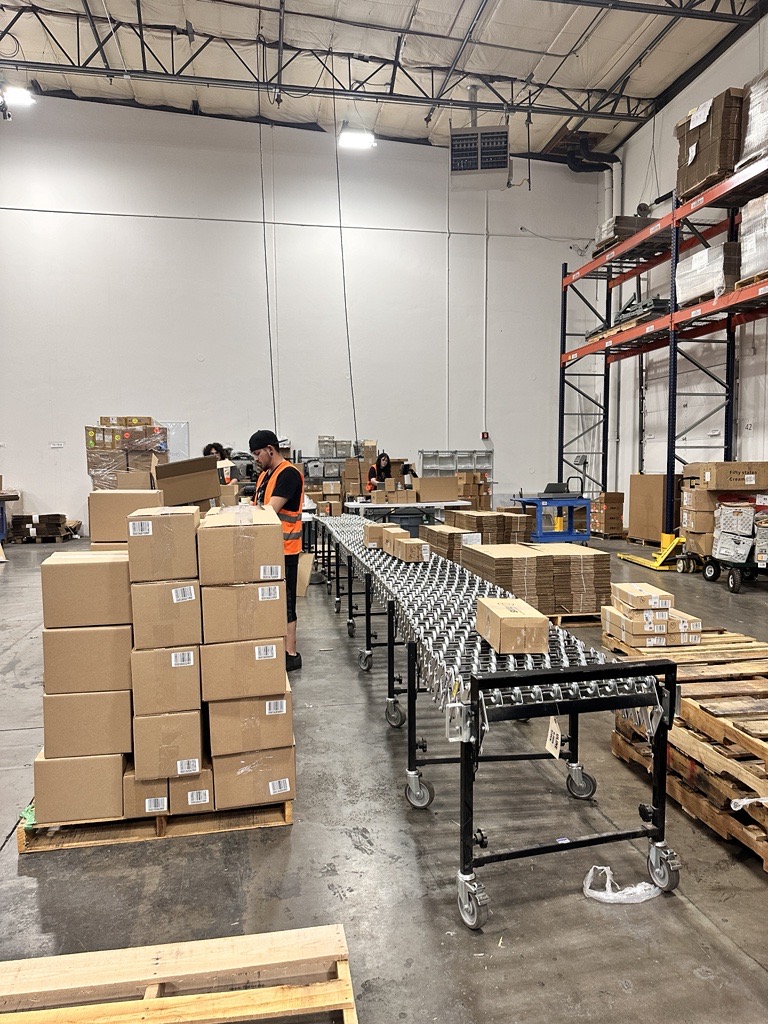
Picking begins when an order is triggered in the system, which could be a recurring schedule for subscription boxes or a batch process for monthly cycles. The warehouse team pulls items from designated storage locations based on a packaging list generated by the WMS. High-volume subscription models usually use wave or zone packaging strategies to boost efficiency.
Accuracy is paramount in this step, as consistency leads to high customer satisfaction. One incorrect or missing item could lead to churn. Many warehouses use barcode scanning and confirmation systems at every touchpoint to avoid these issues.
Packing is where attention to detail becomes non-negotiable. Subscription boxes often include multiple items, marketing inserts, promotional materials, and custom packaging elements. Since these shipments are curated experiences, packers must also meet customer expectations communicated through the order information.
Custom kitting workflows are often necessary for fulfilling subscription box orders, particularly for tiered subscriptions or themed boxes. A third-party logistics provider like Relentless Fulfillment can scale fulfillment operations without sacrificing quality.
Packaging is not just for aesthetics. Smart packaging can reduce shipping costs, minimize damage, and improve sustainability metrics without compromising the unboxing experience. For example, merely changing the box size can cut shipping costs by 20% to 30%.
Shipping and Delivery
While for other retail businesses, shipping and delivery may be a one-time process per customer, subscription box brands make a recurring promise to their customers. If your customer expects a delivery every third Thursday, it must arrive.
Shipping and delivery in subscription fulfillment are less about speed (although that’s important) and more about consistency and cost control. Fulfillment centers use multi-carrier shipping software to route packages through the most reliable and cost-effective methods.
Carrier relationships matter a lot here. Businesses that work with a third-party logistics provider must make sure their partner is flexible in terms of carrier selection. Hybrid solutions, such as regional carriers and zone skipping, can optimize costs while meeting delivery benchmarks for customer satisfaction.
Subscription brands often ship in bulk, which opens the door to negotiated rates, batch labeling, and optimized route planning. These efficiencies matter when your margins are tied closely to logistics performance.
Handling Returns
Customers these days want to have the option to return products they don’t like. To meet this demand, an increasing number of businesses are offering this perk, which is why the reverse logistics market is forecasted to be valued at $954 billion.
Things get a bit tricky in subscription box businesses. Items may be part of a curated set or a limited-time offer, which complicates resale. So, your return process must be agile and integrated with broader customer service and inventory workflows. Depending on your policy, you can then restock, quarantine, donate, or dispose of the returned products.
Return processes should be designed keeping your customers in mind. Pre-generated return labels, portal-based return initiation, and quick refund triggers help maintain trust even if the initial transaction didn’t go perfectly.
For subscription boxes, returns also serve as signals. Are certain products being returned more frequently? Is the packaging not holding up during transit? Return data is very helpful for refining operations and improving the overall product mix.
The Evolution of Order Fulfillment
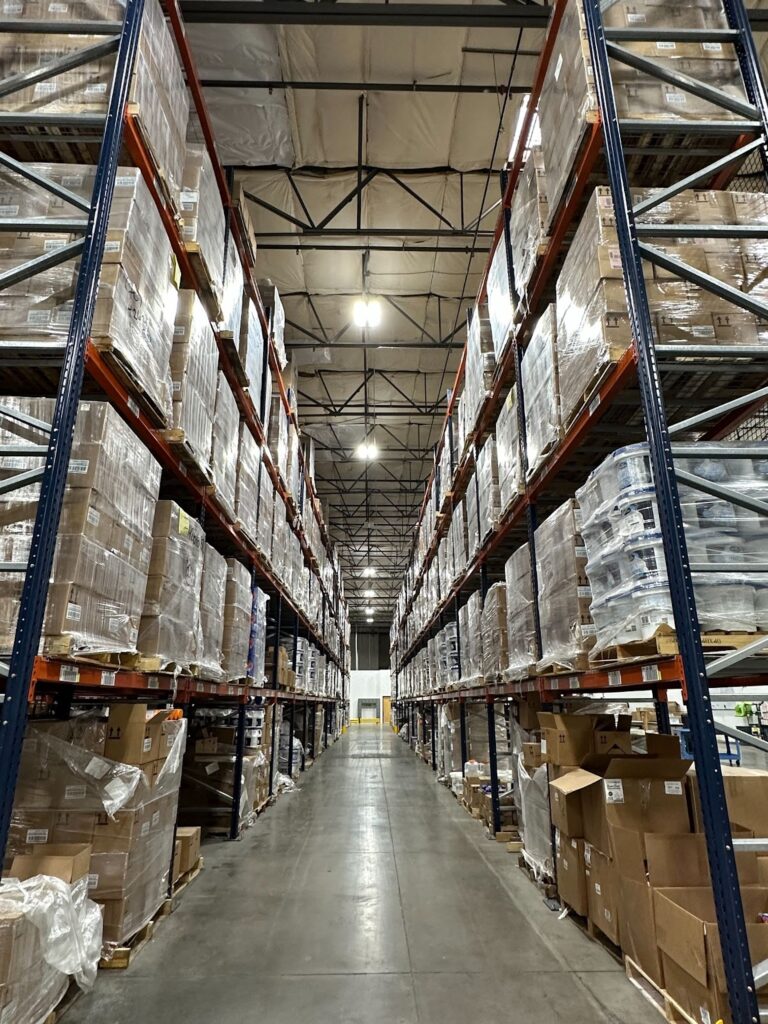
Order fulfillment logistics used to be more manual, with hand-packed boxes and spreadsheets being the norm. Things look different now with automation taking center stage. Third-party logistics providers (3PLs) play a crucial role in the process.
Let’s look at how fulfillment strategies and processes have evolved in recent years.
Shift Towards Automation
According to McKinsey, warehouse automation is growing at a rate of over 10% annually. The speed of adoption is in line with customers’ demands for faster shipping and error-free delivery.
Modern fulfillment centers now use automated guided vehicles (AGVs), conveyor belt systems, and robotics to streamline picking and packing. For example, pick-to-light and voice-assisted picking tools increase worker accuracy and reduce training time.
However, automation isn’t only physical. Digital fulfillment software is also becoming increasingly common, as it integrates with e-commerce platforms to provide real-time inventory updates and predictive restocking. Machine learning algorithms further help forecast demand patterns and assign orders to optimal packing solutions.
For subscription-based brands, automation offers one of its biggest advantages: consistency. Your customers expect the same quality of service month after month. Automated systems do the same thing every time in every aspect, from the generation of shipping labels to order packing.
Role of Third-Party Logistics (3PL)
The growing complexity of order fulfillment logistics has led many e-commerce brands to realize that they can’t always scale without assistance. Partnering with a 3PL like Relentless Fulfillment allows brands to offload the work that comes with the order fulfillment process and focus on product development and customer experience.
Of all the markets they service, retail is the most common user of 3PLs, with 92% of retail brands choosing to outsource their fulfillment services. A reliable 3PL offering warehouse, inventory management, order processing, packing, shipping, and returns saves subscription box businesses a ton of money and hassle.
Specialized 3PLs like Relentless Fulfillment can adapt their fulfillment operations to your brand’s unique needs. For example, subscription boxes require precise coordination. Multiple items have to be packed into curated kits and times with scheduled delivery windows, often under custom branding and packaging requirements. Relentless Fulfillment can meet all these demands with ease.
Plus, 3PLs bring scale advantages. They negotiate better carrier rates, invest in high-end technology, and continuously refine processes. These are all benefits that small or mid-sized brands cannot afford to implement on their own.
Modern 3PLs also act as fulfillment consultants, as they analyze return trends, recommend packaging improvements, optimize SKU slotting, and help brands prepare for seasonality and expansion into new markets.
Hybrid Fulfillment Models
Hybrid models blend in-house capabilities with outsourced fulfillment logistics to create the best of both worlds. It works well for brands in transition.
Perhaps you began with your own small warehouse and fulfillment team, but now your order volume is outpacing your capacity. Similarly, you may want to maintain control over high-margin products while outsourcing standard SKUs. A hybrid approach allows you to customize your logistics footprint without committing entirely to one model.
Subscription box brands benefit a lot from this flexibility. For example, you might opt for in-house fulfillment for influencer boxes or VIP tiers, as the unboxing experience needs to be tightly curated here. Then, you can use a 3PL to manage monthly box shipments to your broader customer base. This way, the brand scales while maintaining intimacy where it matters.
Hybrid fulfillment also adds resilience. Suppose one node of your supply chain management process faces disruption, like a carrier delay or a regional weather event. You have backup systems to reroute customer orders or shift volumes.
Strategies to Improve Your Order Fulfillment Strategy
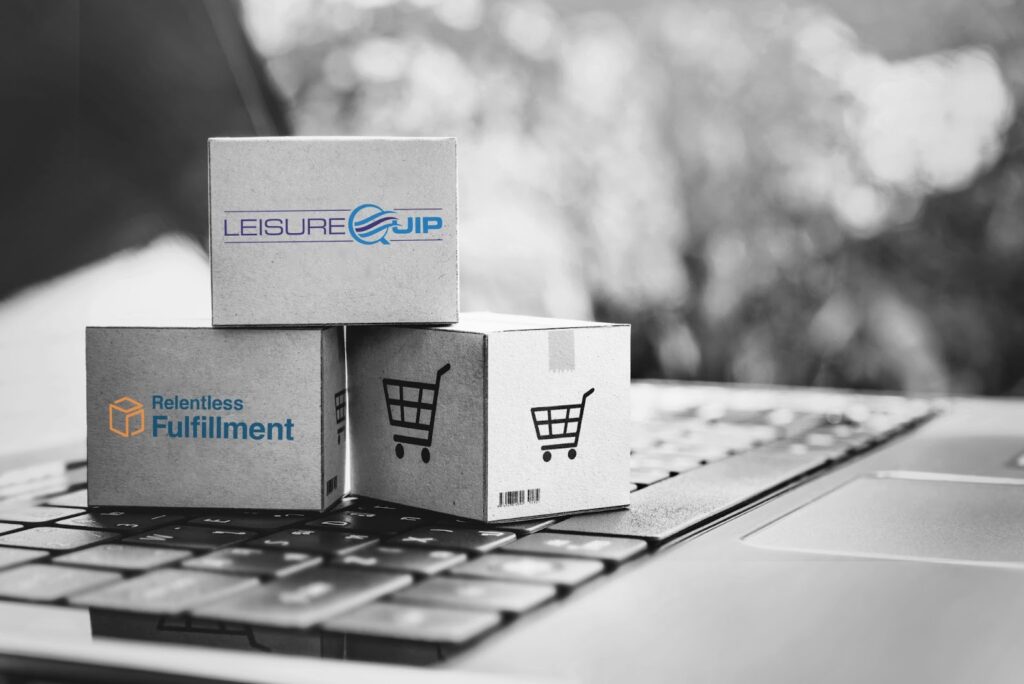
Whether you want to improve delivery time or diversify sales channels, you need to know about tried and tested strategies that can help you achieve these goals. Let’s discuss a few.
Optimizing Inventory Accuracy
Since inventory is the backbone of order fulfillment logistics, if it’s inaccurate, everything else suffers. For subscription boxes, where multiple SKUs are bundled into a single package, accuracy is mission-critical. One missing item can ruin the entire unboxing experience.
So, you must optimize inventory accuracy. The foundation starts with real-time inventory tracking. A WMS integrated with your sales channels logs and updates every inbound product and movement within the warehouse. Barcode and RFID scanning further reduce human error by verifying products at each touchpoint.
Another helpful tool is cycle counting, which involves regularly auditing a small subset of your inventory to verify accuracy. Plus, implementing an ABC analysis allows you to prioritize accuracy based on product sales velocity.
Subscription box businesses often work months in advance, as they must source unique items and coordinate packaging in advance. Reliable inventory data helps prevent last-minute surprises and supports proactive reordering.
Efficient Warehouse Layouts
Your warehouse is where all the action happens. Every second spent searching or maneuvering adds up, especially when customer orders are being picked at scale. A smart layout makes order fulfillment more efficient.
For example, high-demand items should be stored closest to the packing stations. Frequently bundled products should be grouped together in dedicated zones to minimize the need for backtracking. Known as slotting optimization, this approach reduces pick times and boosts throughput.
It also helps to create zones in your warehouse by dividing the space into specialized areas, like receiving, kitting, storage, and shipping. If your business offers themed or tiered boxes, dedicated kitting zones allow packing teams to work without interference.
A common underused asset in warehouses is the vertical space. Fulfillment centers can expand capacity by using racking systems and mezzanines. These adjustments are particularly useful during peak season when space is tight and inventory surges.
Advanced Technologies in Order Fulfillment
Manual force alone can no longer drive fulfillment success. Instead, it’s powered by intelligent systems and smart automation.
Warehouse management systems and fulfillment software become the heart of your warehouse operations. They track inventory, orchestrate picking and packing, manage labor, and sync with your online store. In a subscription-based business, this helps in batch processing and real-time performance monitoring.
Besides software, automation also plays a role on the warehouse floor. For example, automated sorters can sort packages much faster and more accurately than manual labor. Automated forklifts can navigate through the warehouse and retrieve products with precision, and conveyor belts eliminate the heavy lifting for workers.
You can also pair these technologies with AI-driven demand forecasting software. The insights from these tools help you stock the right products at the right time.
More importantly, integrated shipping software further streamlines operations by allowing smart carrier selection based on weight, destination, and delivery window. These tools help you save money and improve on-time rates. Additionally, they provide customers with accurate order tracking information, reducing the need for support calls and emails.
Ready to Redefine Your Subscription Box Fulfillment?
Well-optimized and 3PL-supported order fulfillment logistics have become a strategic advantage for businesses today. The need is even more pressing for subscription box businesses, where every delivery has to be accurate and timely to maintain customer satisfaction and loyalty.
Starting from product-receiving processes, efficient order fulfillment requires an organized approach. An error at any step, be it storing, picking, packing, shipping, delivery, or handling returns, can lead to customer dissatisfaction and, consequently, dent brand reputation.
Subscription-based businesses must keep up with the evolution in order fulfillment processes, which means shifting towards automation, partnering with 3PLs, and using hybrid fulfillment orders. These strategies, in addition to inventory management optimization and technology integration, can help subscription-based businesses stay competitive and meet customer demands.
Let’s turn logistics into your competitive advantage. Relentless Fulfillment offers custom-built, scalable solutions designed to simplify your operations and scale your business. Request your personalized quote today.



